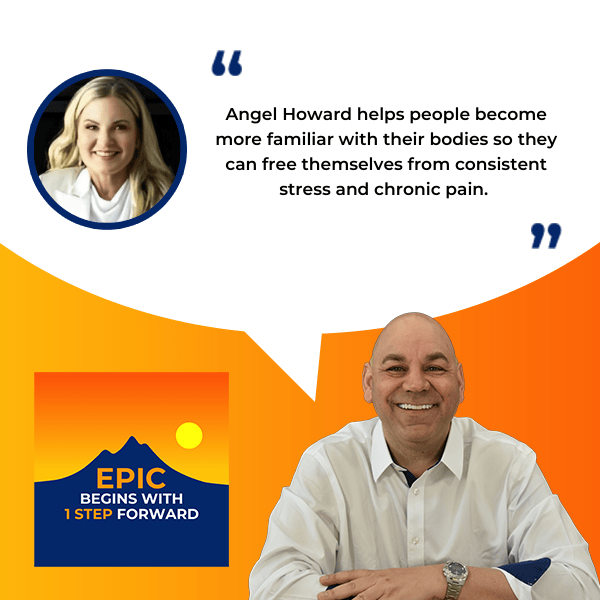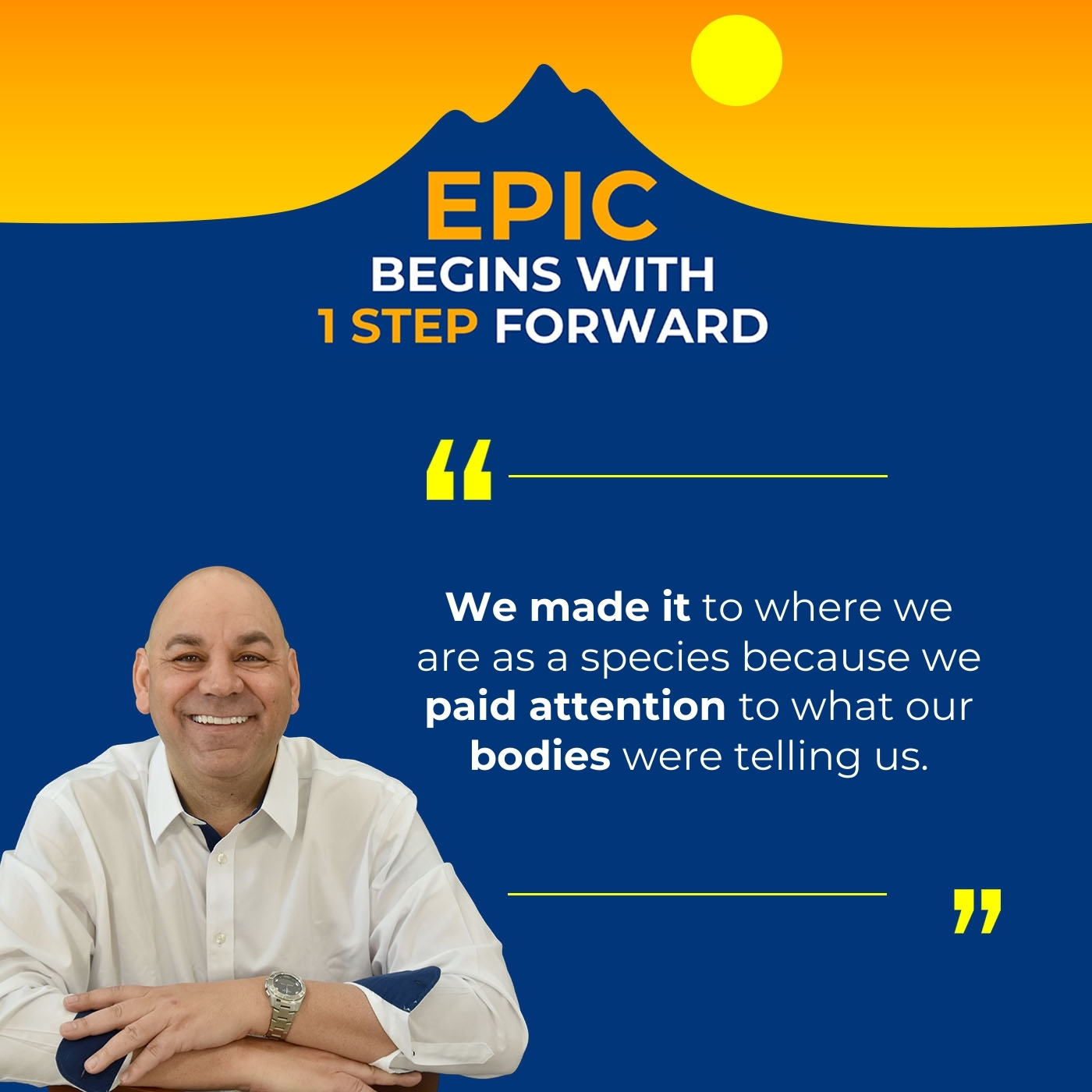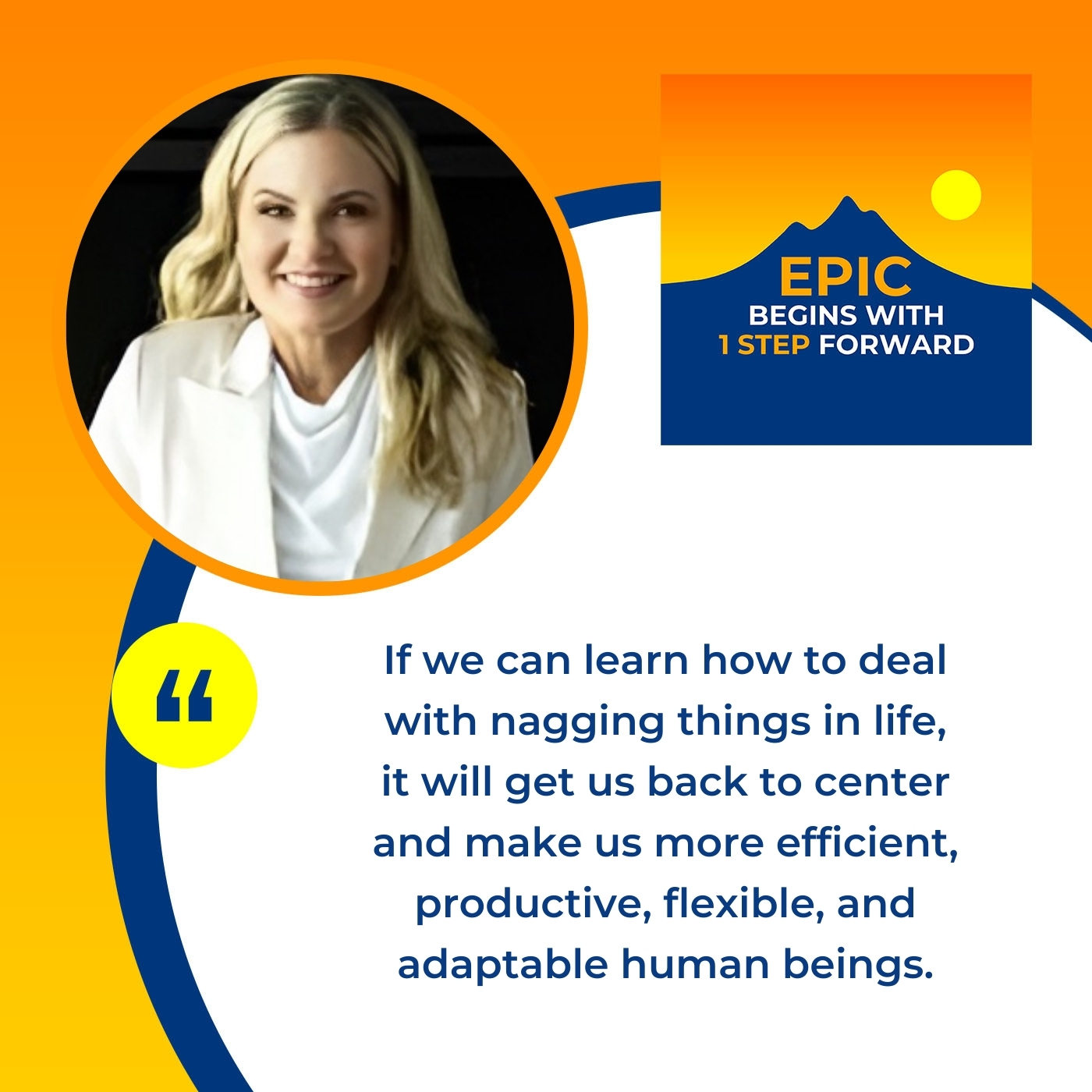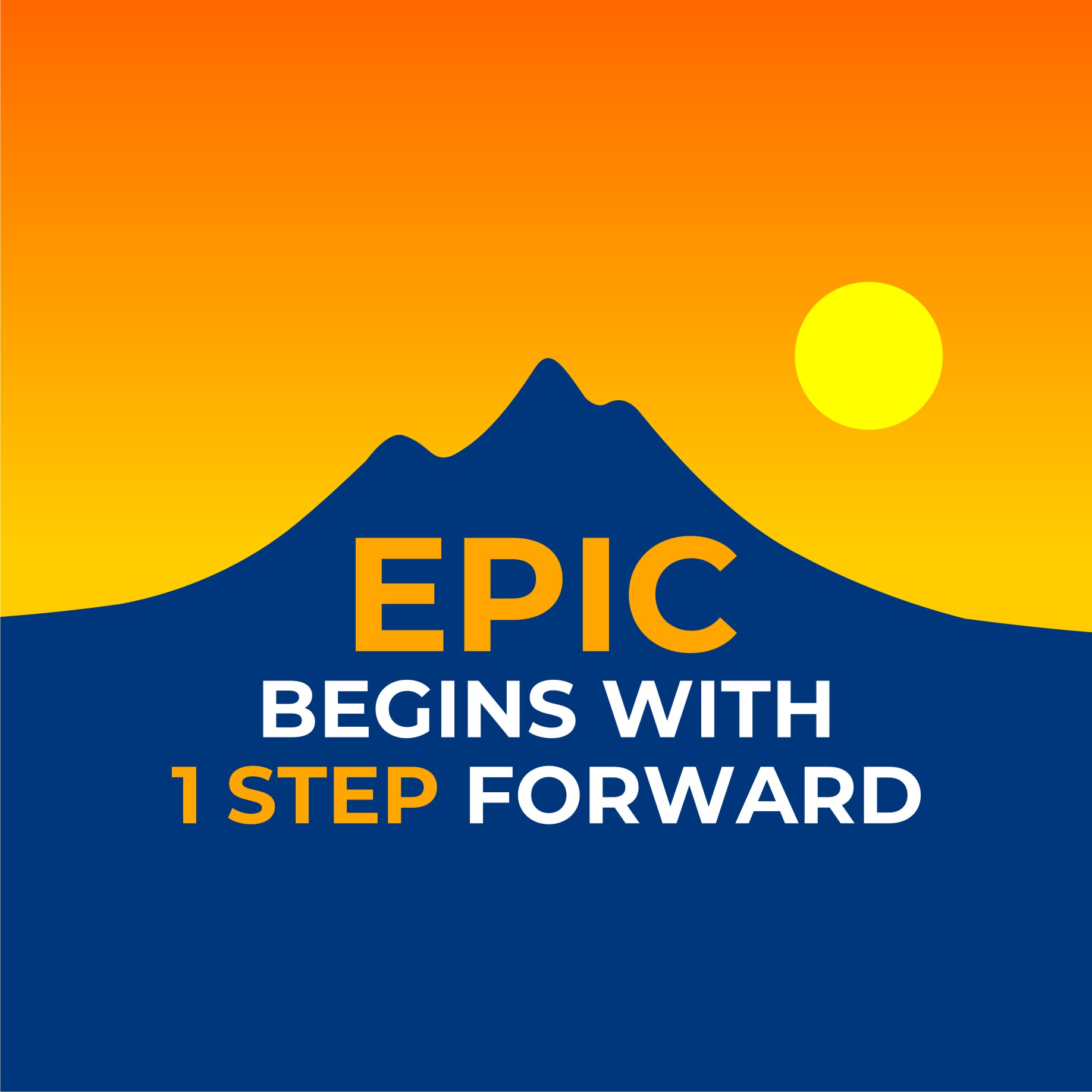In this enlightening episode of EPIC Begins With One Step Forward, Zander Sprague speaks with somatic movement therapist and author Angel Howard about the powerful connection between body and mind. With decades of experience, Angel explains how somatic therapy addresses unresolved trauma and stress stored in our tissues, shaping emotions, thoughts, and even life patterns. From breathwork that calms the vagus nerve to movement practices that unlock buried emotions, Angel shares practical ways to tap into the body’s wisdom and reclaim balance. They also discuss her book Issues in Your Tissues, which makes somatic healing fun and accessible through stories, music, and guided exercises. This conversation will inspire you to trust your body’s messages, release what’s holding you back, and embrace your own epic journey toward healing and wholeness.
Apply to be a Guest on My TV show
#EPICBeginswith1StepForward, #ZanderSprague, #BodyPsychology, #OxygenRejuvenationTherapy, #SomaticHealing
—
Watch the episode here
Listen to the podcast here
Breath, Body, And Breakthroughs: Angel Howard On Somatic Therapy
Somatic Movement Therapist And Author Angel Howard
I am so honored to be joined by Angel Howard. Angel, tell us who you are and what you do.
I’m just a girl there, Zander, but what I do love, helping people with is getting into their bodies. We are our bodies. When I became a somatic movement therapist in 1997, believe it or not, my whole journey was to get people familiar with their bodies, in touch with their pain and to empower them that they can do something about consistent stress, the pain and even the pain in their brain, meaning those anxiety thoughts.
I’m excited about this. As a licensed mental health practitioner, I talked to my clients all the time about their somatic system and how if they tap into it, it can help sometimes eliminate or at least minimize when they’re feeling anxious or depressed or whatever. I’m looking forward to this conversation. Let’s just start off a little with how you get into being a somatic therapist.
It’s very natural for me to be in my body. I started snow skiing when I was three years old and then I was on a track team at six three years old. I came from a very athletic family, meaning that you have to be in your body to perform physical goals of things so always been in there, then I became a dancer. I love dancing. I became a dancer in ninth grade. That’s fourteen years old, when all that teenage angst, all that middle school confusion, mean girls and all the stuff. All day it builds up anxiety. I would go to dance class and I would notice that after class I feel so good. I express.
Also, when you do something physical and you’ve worked your body at, it relieves stress and anxiety and you get your mind off of whatever you’re imagining over. You’re in your body enjoying it. I know that I love to dance. When I went to college, my dad wanted me to be a doctor to take over his practice. I could not do it for eight years, so congratulations to you but I did get a psychology degree. I love psychology. I love the brain. The brain is one of the coolest things that we have as humans. I got into, “How do we work with the brain naturally in my body?” Somatic therapy, which is body psychology, naturally became a fit for me.

As I said, trying to get my clients to tap a little into their body. I had previous guests, the intuitive psychologists, these two women. They’re talking about tapping into our gut feelings and our intuition. I wanted to talk to you a little about our somatic system. Our bodies are incredible. We wouldn’t be here like developmentally if our bodies hadn’t developed safety mechanisms like, “That looks dangerous. You should be scared.” All of that. You walk someplace else, all of a sudden, it doesn’t feel right.
How Feelings And Stories Are Stored In Cells
I’m a firm believer that since we’re only using 10% of our brain and our conscious brain is a smaller portion of that. The rest of our body, our brain and our body has picked up on stuff way before we’re aware that, “That doesn’t look right.” Our body had already gotten that. Let’s just talk a little about how people can tap into those feelings. I talk about anxiety. Anxiety happens. We notice it but do you want to know what? We’ve already had that feeling in our body for some amount of time before our brain goes, “You’re experiencing anxiety.”
I talked to my clients about, where do you feel that? Where does it start? Is it in your gut, your stomach, your chest or your neck? That’s all somatic. Paying attention to your static system. I just talked a lot. I asked you a question but now I’ll let you answer. What is it about the somatic system that you love so much?
One of the things you said that stood out to me was our bodies experience these things long before our head is aware of it. Your body starts accumulating experiences. The minute you’re conceived, believe it or not, how your mother feels about you or how your host feels about you, what she’s going through stress and how she got pregnant. Were you a surprise? All those things that you have no control over, yet the feelings about you and the stories about you start in your cells and it is in your cells.
Once you experience something mentally or physically or emotionally, it gets stored there. For example, you’re three years old. Somebody smacks across the face and says, “You are such a clumsy girl.” Physically, that shocked you. That slap is going to be in your body and it shows up in different ways. Mentally, you’re told by somebody who’s supposed to know more than you because it’s an adult. These people, as we grow up, come into our lives that say things to us. We believe them without questioning because we have not developed the question yet. We don’t have a bevy of things to question from.
You got the physical and the mental. Third, now you have your emotions. How bad do you feel when somebody says, “You are clumsy. You do all that.” That three-year-old grows up and has no idea. Maybe it never happens again but that three-year-old is now thirteen years old and she wants to, for some reason, because all her friends are trying out for cheerleading. The minute she has to go up on stage, the minute that somebody’s looking at her and got to perform. She trips, falls, doesn’t understand, or forgets everything. The shock comes back.
We go on in life. If we don’t go into that, if we don’t question, why am I like this? Why is this concept? Why is this continuing to happen to me without any reason? You have to scratch the surface a little bit like, “What? I’m not clumsy.” That affected this particular person for life. She may never have achieved or wanted or even gone for anything she wanted to do like dance, cheerleading, tennis or whatever. That also could affect her relationships.
You know this because you’ve seen this in clients. It’s like, “I don’t know. I just feel clumsy all the time.” We have to get back to that moment and there are many different ways like EMDR. I’m sure you’re familiar with it. In the somatic world, it should go into that uncomfortable feeling that’s locked inside the body, whether it’s in the chest or in your throat as you said or in your stomach, where there’s a knot like, “I just can’t move forward.” You go into that as a somatic therapist and you start to ask the body.
People think the body doesn’t know. The body can’t answer. It’s like, ask it sometime. You’ll be amazed at the answers it gives you. That’s for somatic therapy and I get excited about it because it doesn’t have to be drudgery. When you can touch these traumatic moments and have a little fun with them, shaking them off or doing something silly so the body gets a chance to touch and release.
If you can deal with traumatic moments through somatic therapy and have a little fun with them, the body gets a chance to release them.
Unlocking A Better You Through Breathing
One of the things I work with my clients a lot, it’s called many things but I call it Oxygen Rejuvenation Therapy. It’s simply when we’re feeling stressed, we tend to not breathe. I’ll tell my clients, “I want you to bring a straw to our session. What I want you to do is breathe in through your nose. Hold it for a count of three, and then blow it out through the straw.”
The whole idea of the straw is that it will encourage the diaphragmatic breathing so we get further down in. I said, “Do that 3 to 5 times. You may find that you get a little light-headed because you just put a whole lot of oxygen into your brain and your body.” However, I find what that tends to do is help release a lot of the tension that they may be feeling because of anxiety or depression or being scared or whatever is bringing them in.
A funny thing is, rule number one for all of us, yes to breathing. Our body wants oxygen. If we give it, the muscles, which are all tight and we’re talking about tied up in the neck and stuff, also go, “Oxygen, yes.” It opens up. My clients have said, “It’s stupid but that seems to help calm down, re-center and help that somatic system do its job.”
Breathing is a vaginal nerve regulator to in for four counts and exhale for counts. Do that fifteen times, but I want to add something because it’s fun if you think about this. Why is breathing so hard? People shallow breath because they’re in a state of anxiety. Here’s something to think about. When you’re born and you take your first breath, they have to get all the fluid out. You can pretty much fish for nine months. All of a sudden, it’s like a slap and you have this natural reaction to open up and pull this air into your lungs and it hurts. It actually hurts.
If you think about somebody who’s drowning or has partially drowned and then expel the water. Breathing back hurts. The first memory of breath as a baby in your primal state is painful. It’s like, “I’m not doing that again.” You start breathing shallow. These wonderful things like breath work and yoga. Yoga brings in the whole concept. The concept of breath is prana. It’s about how comfortable you are breathing in and taking in like, “I want all of life.” You can find the blocks mentally. It’s like, “I’m not sure about that.”
Breathing through those blocks, which is somatic, can help expand that restriction on maybe what you think about life. It physically expands your body because if you can feel it, you can heal it, that old adage. Breathing in and as you were saying, to regulate the in and the out focuses on the breathing and calms that hold legal nerves down, which takes the anxiety and calms it down. It’s a wonderful interconnected process.
How To Get Back In Touch With Our Bodies
I do find it funny that we are sadly so out of touch with our bodies in this day and age. Whereas, we made it to where we are as a species because we paid attention to what our body was telling us. When you start to tap back into that, it is so powerful what you start to notice about yourself, your environment and things that you’re like, “I need to change that. Clearly, that is not working for me.”

It’s about trust. Trust is such a big word but you find trust through your body. You’re talking about how we survived listening to our bodies. Our primal system back here, fight or flight is all about survival. When it picks up a dangerous person or situation or maybe it’s finally knocking you on the head so many times like, “This person I’m in a relationship with is not good for me.”
It’s hard because you have to go against your mind going, “I’m supposed to blah, blah, blah.” Every time they walk in the room, my body has the shutter and it’s about trusting the body’s messaging. It’s about listening and not dissing it. The body’s messaging, questioning and being curious, why is this chronic? What is this about?
It seems so basic and obvious to me when I talk to my clients or I’m talking to people and we get talked about psychology and stuff like that. You do realize that in the first, honestly, even less than a second, when you see someone walking down the street or whatever. You’re making a decision right or wrong, safe or dangerous, fight or flight. That’s how we have survived. Even if it didn’t, in the caveman days, we would have been killed by a saber tooth tiger or something. You’re right, there’s all those life experiences and I do believe that stuff piles on and we may hold on to something as you said from a three-year-old.
How Somatic Therapy And Healing Works
You’re not even cognitively aware of that thought because your brain just isn’t developed enough to link it all together. We’re having this wonderful conversation because you and I understand somatic. For my audience who may be going, “That’s great, Zander and Angel, but you’ve been talking now for quite a few minutes. Explain what the somatic system is, how it works and how you work with people to work with their own somatic system.”
I’ve been a somatic teacher since 1997 for groups and individuals. What I learned originally was called Dance Kinetics. It’s movement with the kinetics and it had to do with body fluids. The body fluids were the movement qualities. There’s smooth and pounding and all those things that can connect with your heart and your lymphatic system. Those are the original teachings. I’ve taught it for so long that the body fluid is like your audience is like, “I don’t even know. I can’t name any six body fluids.” I’m like, “Let’s do it easier.”
The chakras, which is a Hindu way of parsing out the body, seven different chunks of the body. Within each chunk of the body, each area of the body, you have a list of emotions and mental thoughts that go along with that particular part of the body. For example, the heart area. That’s obvious. It’s like love, passion, anger and fire. I put elements with each one of the chakras so that you feel tightness in your chest, which could be the air, fire, or the lack of fire. It could be holding back your passion or your drive. It’s the fire.
The movement there is pounding. It’s like the African drums. It’s the way of determination. In my dance classes or in my work people, we’ve put on African music and we just start to pound it out and with the awareness of, “This is my heart. This is my heart beating. This is me opening and leading with my heart like it’s safe and it’s okay.” You can start to connect to your passion because you’ve given yourself the permission to connect to that passion.
Give yourself permission to connect with your passions.
Breaking it down is even simpler than that for anybody. There’s four things. The first thing is to stop whatever it is. Something’s happening. Anything’s happening, either it’s shocking or as little and it’s nagging, but just stopped for three seconds. Take a breath and acknowledge it and say, “I get it. That’s the same pain in my neck. It’s coming back now.” Acknowledge it then let it speak. Release it. If it’s a neck thing, move your neck. Think about what’s in your neck area. What am I not expressing? Clear your throat.
Let’s talk about throats. People naturally want to clear it and speak your truth. What do you not speak to your heart and your head? You know a lot and feel a lot. What are you not saying? What do you feel like somebody’s strangling? These are the questions to ask in these areas. How do you move it out? How do you move through it? Stopping, feeling, acknowledging and expressing it and then connect back in. You can do all this within five seconds.
Honestly, I feel almost instantly better having done so.
Shifting back to center. When something happens and it gets you off kilter, whatever that is. I don’t know about your readers, but I know that when I’ve got emotional stuff going on, it rents too much space in my brain. I can’t make a cup of coffee without having it sit back through like, “I need to have this conversation with her but I don’t want to,” and then that’s all you’re thinking about. If you can learn how to deal with these nagging things, it can get you back to center and help you be a more efficient, productive, flexible and adaptable human.

Writing The Book “Issues In Your Tissues”
I do know that you wrote a book, at least one.
Two because I’ve got another one coming out.
Congratulations. I see it over your shoulders. Let’s talk about your book for a moment.
It’s called Issues in Your Tissues. That was something I coined many years ago talking to some massage therapist about what they were getting into when they started touching another human’s body, the stories they’re going to be releasing. Issues in Your Tissues is a fun and easy book to relate to. It goes to each chakra with the elements. It gives a story of, “This is what happened to me, so that you can relate.” It’s just a human story. At the end of each chapter, I have a video
It’s a QR code with a video so you can move with me. I’ve got a Spotify list, so all the music. Let’s say this very watery, sensual and about flexibility and adaptability. You can put it on headphones or in the car or in your office. What I try to make an Issues in Your Tissues is I try to make somatic therapy easy and attainable for anyone. You make it fun. That’s all. It’s changed my vocabulary a little bit to make it fun and understandable.
That’s very important because of somatic therapy, although, I’m clear about it but it’s because I’ve studied. I studied and did graduate school and do believe in how powerful it can be for people. Once you start paying attention to our somatic system, it opens up so much for you. You become so much more powerful.
It’s a conversation.
Who doesn’t want to feel empowered in their own life and their own body?
This book has to do with the communication between you and your body. That’s constant and consistent. You can help yourself guide yourself into your next life, your next steps and what you’re doing because your body will lead you there. The second book which is coming out is What’s Messing with Your Messages is about how your body talks to us, whether you know it or not. It’s like you say, when you walk into a room, you can assess somebody so quickly. Their bodies are talking to you and your body is talking to them. It’s about 93% of all communication that’s nonverbal. That’s what the second book is about.
Angel’s Not Yets In Her Career And Life
That’s so exciting and how you’re tying all of that in. You clearly have been on those wonderful, epic journeys. One of the things I love to ask my guests, in my book, I talk about this concept of not yet. I think it’s so powerful for the things that we want to do. Be it writing a book or running a marathon or starting a podcast. There’s stuff that is just in and of itself not yet, so writing a book. “Angel, has your book come out?” Not yet. If you say no, then it makes it sound like it’s never coming out. Not yet says, “It’s not available today but it is soon.”
It’s happening.
There are those things in our life that we say, “I want to go to Japan or Australia.” Have I gone? Not yet. I hold open that it is possible. I just am not actively doing it. I love to ask my guests, what’s one or two of your not yet?
I was thinking I got a lot of not yets.
That’s fine. I’d like to say one or two but if you have more, that’s fine.
I’ll keep it simple, but it’s just because I’m an explorer. I am basically at heart an adventurer, so I love it. I’ll tell you what I want my life to be in the next two or three years, is to travel on a speaking tour like to be in Bali or to speak in Bali or to be in Spain or London or Dubai, but to be on international stages. Has it happened? Not yet, but it is in the works.
That’s awesome. I’m right there with you. Let me be traveling around and what I get to do is speak. How awesome would that be?
I love it. The other not yet, I haven’t done a TED talk yet. I’m working on that. I’ve got other places that I’m doing talks with, for and professionally but I haven’t done that illustrious TED talk yet, so not yet and then my TV show. That’s something that’s already coming out. We are working on the show. This is on PBS and it’s a show called Women our Age. What I love is I mixed somatic awareness and therapy.
We dance a little bit before the show and then have an expert on afterwards when we do an interview. I got to tell you. That has been the easiest thing I’ve ever done. I do want to tell people that when you’re fully aligned. I always said this but, when you’re aligned with who you are in your purpose. Things that would seem hard or effortless. Has that show been picked up by the major networks? Not yet.
When you are aligned with who you are and your purpose, the hardest things can become effortless.
Get In Touch With Angel
The funny thing is I do have a broadcast TV show and I, too. One of my not yet hasn’t been picked up by a network. I could not agree more. I always dreamed of doing a TV show and said, “I’m going to make it happen.” I’m making it happen, and it is a lot of work but it doesn’t feel as hard as other things I do in running my company. It was hard because when I get to be on set and the camera is on, I’m in my happy place and that’s reflected. When you do something that is you and it’s your passion. As you say, your body is broadcasting that out. That’s so much that we’re doing similar things. That is so awesome, Angel. How can people find you or get a hold of you?
I’m so easy to find. It’s AngelHoward.co. everything is there. All my social media and you can book a fifteen-minute discovery call with me. Talk to me about whatever, honestly, and questions for my guests on my show.
Angel, what an epic conversation that we’ve had getting to talk about somatic therapy and our somatic systems and stuff. I just want to thank you so much for joining me and sharing all of your great knowledge.
Thank you, Zander. This has been fun.
I know. I’m so lucky I get to do this, I have to say.
I understand.
I want to remind everyone that if you’re ready to begin your epic journey, go to EpicBegins.com. As always, remember epic choices lead to the epic life that you want.
Important Links
- Angel Howard
- Angel Howard on LinkedIn
- Angel Howard on YouTube
- Issues in Your Tissues: How to Navigate Life through Your Body’s Messaging
- WildHeart Expressive
- The Upshift Podcast
About Angel Howard
 Angel Howard is the founder of WildHeart Expressive, the host of Upshift podcast, and the author of Issues in Your Tissues.
Angel Howard is the founder of WildHeart Expressive, the host of Upshift podcast, and the author of Issues in Your Tissues.
She holds a bachelor’s degree in psychology, a master’s in business and finance, and a certificate in somatic movement therapy.
She has held executive positions at Coca-Cola, the Legacy Housing Foundation, the Tennessee Clean Water Network, and the Fort Loudoun Lake Association.
Now, as a somatic movement therapist, executive coach, and speaker, she empowers leaders to connect with their inner voice, creativity, confidence, and body.

